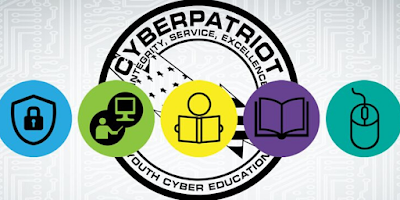The reason I wanted to say “No” when my daughter asked was that I know next to nothing about the inner workings of computers. Like any mom who wants to push off a major decision, I told my daughter “I’ll think about it.” Like any experienced daughter, she knew that meant “probably not.”
My kids know I like them to take initiative. We have a busy life. If they wait for me to make things happen for them, they’re going to miss out on some opportunities. So my daughter asked if she could contact a computer science professor at a local college to see if he’d serve as a mentor if we started a team. To my surprise, he immediately agreed.
In addition to finding a mentor, my daughter recruited 5 other kids to join her team. The mentor met with us and helped us understand the concepts involved in the competition. He showed the kids which training modules would be most important for the initial competition round.
My daughter and I have worked together on the training modules. I now understand why websites insist on such elaborate passwords. An 8-character password with only numbers can be cracked in under one second. Add lower and upper case letters and symbols, and it’ll take up to three weeks to hack. If you bump up to 9 characters, it’ll take 5 years to crack. At 10 characters, your password is safe for up to 526 years!
The CyberPatriot program is giving my daughter and her teammates useful skills that will help them secure their own devices. It’s also exposing them to potential careers that won’t be going away anytime soon. Happily, we’re getting these benefits with little expense and a lot of flexibility. The competitions are online, so we don’t have to travel to a distant tournament site. And they can be completed at our convenience within a 6-hour window during a specified weekend.
My daughter is also learning responsibility and leadership as she tries to plan meetings that will accommodate the schedules of multiple homeschool families and a college professor.
I’m very happy my daughter wasn’t discouraged by my “I’ll think about it” response. CyberPatriot has been a learning experience for us both. It’s definitely worth looking into for your students.
 Colleen Hroncich loves that homeschooling allows her to learn right alongside her children. A published author and former policy analyst, Colleen’s favorite subjects are economics/public policy and history. She has been active in several homeschool co-ops and is a speech and debate coach.
Colleen Hroncich loves that homeschooling allows her to learn right alongside her children. A published author and former policy analyst, Colleen’s favorite subjects are economics/public policy and history. She has been active in several homeschool co-ops and is a speech and debate coach.































